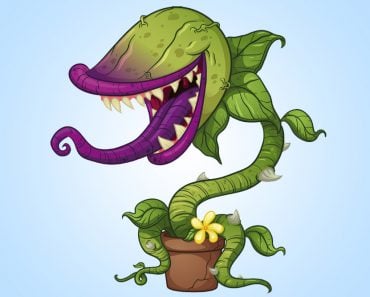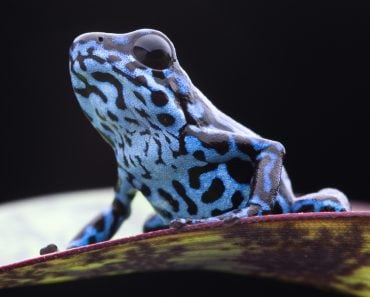Table of Contents (click to expand)
Plants have evolved many ways to defend themselves from being eaten. They can have thorns, prickles, and spines to make it hard for animals to eat them. Some plants can release a chemical when they are bitten that makes the plant taste bad or poisonous to the animal. Plants can also release sap or liquid that traps the animal in place. Some plants can release airborne chemicals that attract predators to eat the animal eating the plant.
When you are stomping through a field, plucking weeds from your backyard, or picking out fresh vegetables from the market, it is unlikely that you think much about the “lives” of plants. Without a central nervous system and an active “brain” like so many mammals, it is easy to disregard plants as life forms. For all the vegetarians and vegans out there, who defend their food choices by their dinner’s lack of sentience, this article might just change their perspective, if not their dietary habits.

While plants cannot walk, run, cry out or feel pain (at least in a way that we are able to quickly detect), they are far from defenseless, senseless life forms. In fact, plants often have more defensive mechanisms than mammals as a result of their inert and silent existence. With that in mind, how exactly do plants defend themselves?
Short answer: In countless ways, from physical and chemical responses to signaling behaviors, camouflage and mimicry.
Recommended Video for you:
The Quiet Intelligence Of Plants
From grass species and massive trees to flowers and tiny bushes, plants have evolved with a multitude of defensive mechanisms. As with any other evolutionary development in animal species, this has been the result of millions of years of mutation and countless generations that have either survived to reproduce or fallen to external threats.
The primary threats to plants are obviously herbivores (animals that eat only plants, such as insects, birds and various other mammals). While some destruction is simply unavoidable, such as the great grazing herds of the world’s grasslands, these threats can often be countered by volume; there is simply too much grass producing too many seeds to worry about those species being eradicated or prevented from reproducing.

Most plants also have other techniques to ensure their survival, such as their phototropic abilities (physically reorienting to capture the most light) and incredible skills at finding nutrients and water even in barren soil. There is even “communication” between nearby plants, either through a connected root structure that can share/trade resources, or through the detection of sun-soaking competitors, resulting in growth in an opposing direction. These hidden agendas and actions are often missed by those who think of plants as dumb, mindless carbon-based life forms.
When it comes to more specialized plants, perhaps those that aren’t as hardy or tolerant of harsh conditions, more advanced adaptations are necessary for protection and survival. Now, let’s take a closer look at some of the most impressive defenses that plants have developed over the past 700 million years since they first emerged.
Physical Defenses
Given the incredible physical diversity of plants in the world, it comes as no surprise that their physical defense mechanisms are equally impressive and varied. Thorns, prickles and spines are the three most common and recognizable forms of physical defenses, and while many people might mistake them, they are distinctly unique. Thorns are essentially sharpened branches or twigs, whereas prickles are actual growths from the epidermis of the plant, intentionally designed as smaller defensive weapons than thorns. Finally, there are spines, which most people would recognize from cacti. These spines differ from the first two examples, as they tend to be even sharper, often thinning to a point that is microscopically fine, and can be broader or larger than thorns or prickles, since they also provide shade for the body of the plant.

All of these physical adaptations are specifically tailored for a number of things, including preventing common larger predators from alighting or consuming the fruits/flowers, while also welcoming those essential seed and pollen dispersers in safely. The size and function differences may seem minute, but it took millions of years for them to evolve those separate features, so everything is purposeful (albeit accidental, from a mutational perspective).
Some plant physical defenses are harder to see, both for predators and humans, such as trichomes, which are essentially a sharp fur that will leave a painful sting where it brushes on the exposed skin. The reason for this discomfort, despite the gentle contact, is that peripheral glands inject trace amounts of toxin and poison into the same wound that the bristling fur inflicted; the entire process can take mere milliseconds.
Some other plants, particularly some species of ferns, are able to close up at the slightest physical contact, clenching up and protecting their leaves, and hanging low, as though it were dying or sick. This makes the plant look less appealing, often helping it avoid any further predation until the threat has passed, when it will reopen its leaves and flourish in the sunlight once again.
However, these topical defenses are nothing compared to the physically mobile nature of certain carnivorous plants, such as the Pitcher plant, Drosera, or Venus Flytrap, but going into those fascinating and aggressive plants is beyond the scope of this article. The last thing I’ll say is that those plants are anything but helpless, and have some of the most fascinating adaptations in the natural world.
Chemical Defenses
Not all plants choose to show their defenses “on their sleeve”, per se, but instead rely on complex chemical reactions and lightning-fast delivery systems to ward off would-be diners. The leaves, plants, flowers and stems of certain plants are delicious food sources for animals, but insects masticate more plant matter than mammalian herbivores – by a LONG shot. It is firmly believed that insects represent more biomass than any other mammals, outnumbering humans alone by 200,000,000:1. Therefore, since insects can easily crawl around thorns, prickles, and spines, defenses on a cellular level are required.
Many plants will allow an insect to take an initial bite or two, but it might just be their last meal. For instance, specialized cells on the surface of many plants will instantaneously release unpleasant chemicals when they are breached or consumed, making the taste unpalatable or even poisonous to the insect. Other plants release sticky sap or liquid that traps the insect in place, where they will eventually die or be eaten by a larger predator looking for an easy, incapacitated snack.
Idioblasts are some of the coolest types of these specialized cells. When the cells are punctured or broken, they release barbed crystals into the mouths of the hungry insects, as well as venom that can paralyze or kill a hungry insect. These idioblasts cover much of the surface of the plants, acting as “land mines” for any tiny herbivores that can avoid spines and prickles.
Social Defenses
Plants may not be able to speak, but there are other ways to communicate and collaborate with the rest of the world. For example, when certain plants are under attack, the stress of that munching insect stimulates the release of powerful airborne chemicals that attract a variety of larger predators, such as wasps, dragonflies or even small mammals and lizards. These animals will be drawn to the plant that is being eaten, where it can make quick work of the irritating insects doing the damage. This is a type of chemical signaling, but the social aspect – essentially direct communication with other species – makes this defensive mechanism a thing of wonder.
Finally, many plant species have long-standing arrangements with some insects, in a relationship called commensalism. This is particularly prevalent in large trees, namely in South America, where species of vicious ants will take up residence on a tree, which houses and feeds them, and has no negative effects on these “invaders”. In exchange for room and board, the ants will defend the tree to the death, against other insects, birds, larger mammals and even plants that attempt to steal the tree’s sunlight.
As you can see, plants are far from the vulnerable salad fodder that we so often think of them as. In fact, most plants are better equipped than humans to fend off the environmental threats they face. I suppose it’s a good thing that humans have houses, air conditioning, insect spray and fences!
References (click to expand)
- Research Finds New Plant Defense Mechanism to Insect .... The University of Nebraska–Lincoln
- Plant defense against herbivory - Wikipedia. Wikipedia
- War, A. R., Paulraj, M. G., Ahmad, T., Buhroo, A. A., Hussain, B., Ignacimuthu, S., & Sharma, H. C. (2012, October). Mechanisms of plant defense against insect herbivores. Plant Signaling & Behavior. Informa UK Limited.













